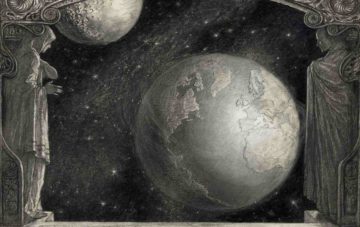 Joe Bucciero in The Nation:
Joe Bucciero in The Nation:
lfred Döblin’s sprawling 1924 epic, Berge Meere und Giganten—recently translated into English for the first time as Mountains Oceans Giants—begins in a relatively near future when the earth is on a crash course for disaster. “None were still living of those who came through the war they called the World War,” Döblin writes. A fading memory in the space of the text, World War I retained a decisive influence over the author’s Weimar Republic in both symbolic and material terms. The German scholar Rudolf Kayser was likely thinking of the brutality of mechanized trench warfare when he remarked, in 1932, that the human race was “dying of its own works.” By then, the Great Depression and contemporary political turmoil would have colored his outlook as well (the Weimar Republic itself “died” early the following year). If some Germans in the interwar period saw promise in technological acceleration, more dreaded its consequences. Facing threats from the sky to the factory floor, people had to wonder: How long could humanity hold out?
In Mountains Oceans Giants, Döblin tenders an answer through a speculative history that covers some 600 years across nine semi-chronological chapters. The centuries witness torrents of both innovation and catastrophe—indeed, the latter often because of the former—that project concerns common to Döblin’s post–World War I moment (new borders, migration, corporatization). His book reads at times like an encyclopedia, akin to Moby-Dick, focusing less on individual characters than on the events and effects of European development. By the opening chapter, the West has become a technocracy, abjuring national designations in favor of uniform industrial “townzones”: Berlin, London, New York, among others.
More here.
